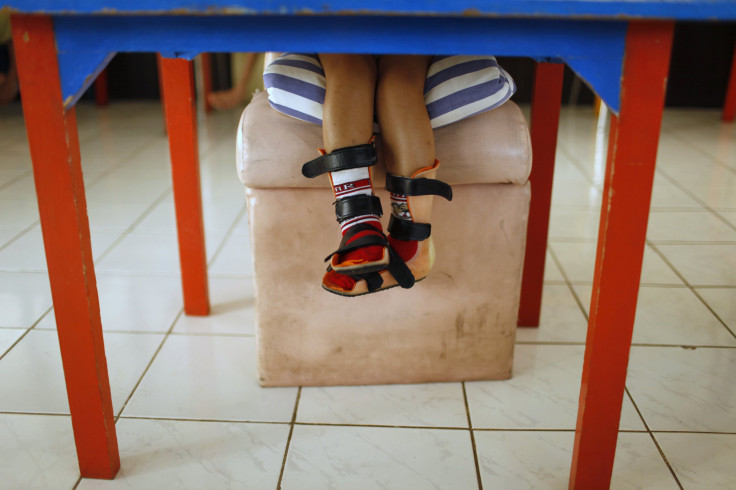National Cerebral Palsy Awareness Day 2016; Can You Identify Signs Of The Neurological Disorder?

Cerebral palsy is the most common childhood motor disability, affecting 1.5 to four of every 1,000 live births or children worldwide, according to the Centers for Disease Control and Prevention.
“When I tell people my story, they are often shocked,” DonnaMarie Comstock wrote in a letter to United Cerebral Palsy. Born three months premature, “the doctor told my mom not to look at me or bond with me,” she wrote. “He was just trying to be kind to her, to spare her the sorrow of losing me.”
Cerebral palsy is an umbrella term referring to a group of neurological disorders that permanently affect body movement, muscle coordination, and balance. It’s not always detected immediately, but most children are born with it, and early signs generally appear before a child reaches 3 years old. Such was the case with Comstock; because she wasn’t developing as her older brother had, her mother suspected something might be wrong. However, confiding her fears, the pediatrician’s first response was a disheartening, “no, she’s just lazy.” Soon enough, though, Comstock received a formal diagnosis of cerebral palsy.
The most common physical symptoms of the disease include a lack of coordination when performing voluntary movements (ataxia); stiff or tight muscles, and exaggerated reflexes (spasticity); walking with one foot dragging, on the toes, with a crouched or scissored gait; and muscle tone that’s either too stiff or too floppy. Common neurological symptoms include seizures, hearing loss, impaired vision, bladder and bowel control issues, pain, and abnormal sensations.
Cerebral palsy is not hereditary or progressive, meaning it doesn't get worse over time. It generally occurs when there’s damage to the developing brain, specifically in the part that controls muscle movement, during pregnancy, birth, or shortly after birth. For the small number of children who develop the disease within their first years, the cause is usually neurological damage from brain infections, such as bacterial meningitis or viral encephalitis. Head injuries, falls, and child abuse may also contribute.
“The doctors told my parents I would never be able to walk,” Comstock wrote. But in fact, symptoms of the disorder vary from person to person. Some children require no special assistance, while others with severe forms of the disorder, who might not be able to walk, will need extensive, lifelong care. This doesn't mean they’ll need special schooling, however; many children with cerebral palsy have average to above-average intelligence.
Hearing she might not be able to walk, Comstock’s parents “jumped into action, seeking out every organization they could find to get help for me,” she said. Soon after her diagnosis, her family discovered United Cerebral Palsy, and Comstock began intensive physical, occupational, and speech therapy. She wore braces that “went up to my waist and weighed more than I did,” and then went to school where she faced “teasing and bullying from classmates who just didn’t understand.”
For eight years Comstock wore her braces, struggling to dress herself each day. Despite the bullying, she persisted, and today, she is a married, working mother with children of her own. Describing herself as one of the “lucky ones,” she is one of the many reasons why today we observe National Cerebral Palsy Awareness Day.
No family needs to go it alone and United Cerebral Palsy can help. Supportive treatments, medications, and surgery have helped many people with the disorder improve their motor skills and communication abilities. Certainly, as Comstock’s story proves, early therapy can sometimes transform a disabled child into an enabled one.
Published by Medicaldaily.com



























